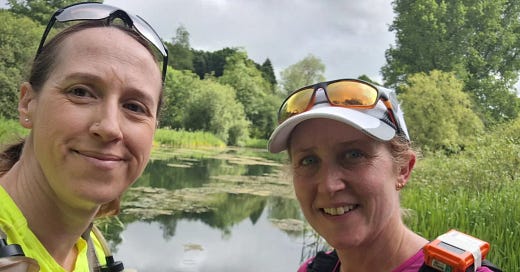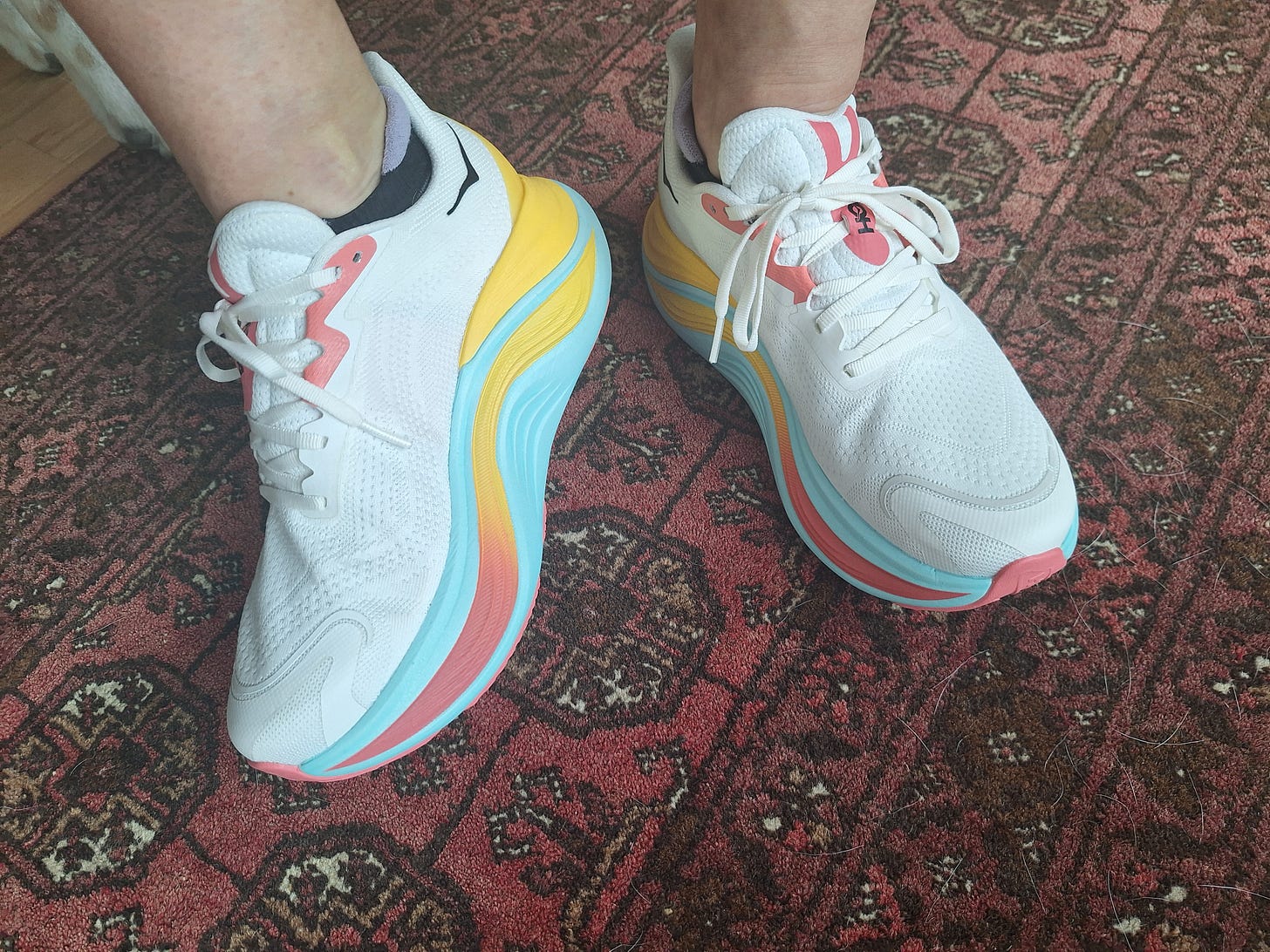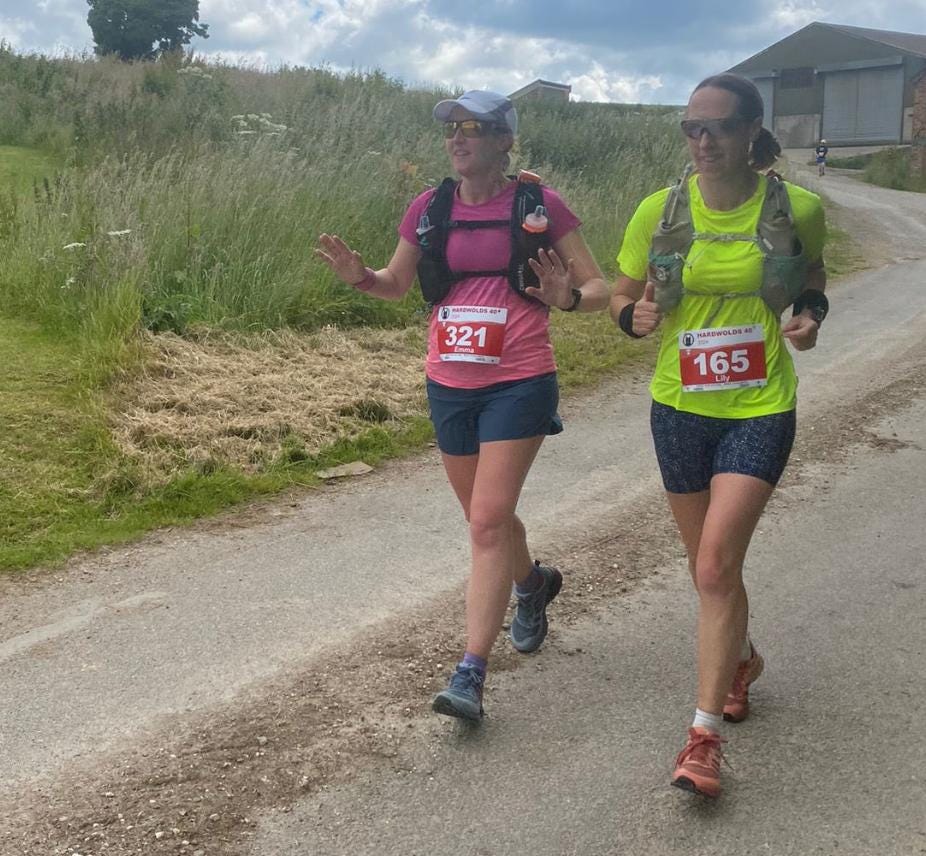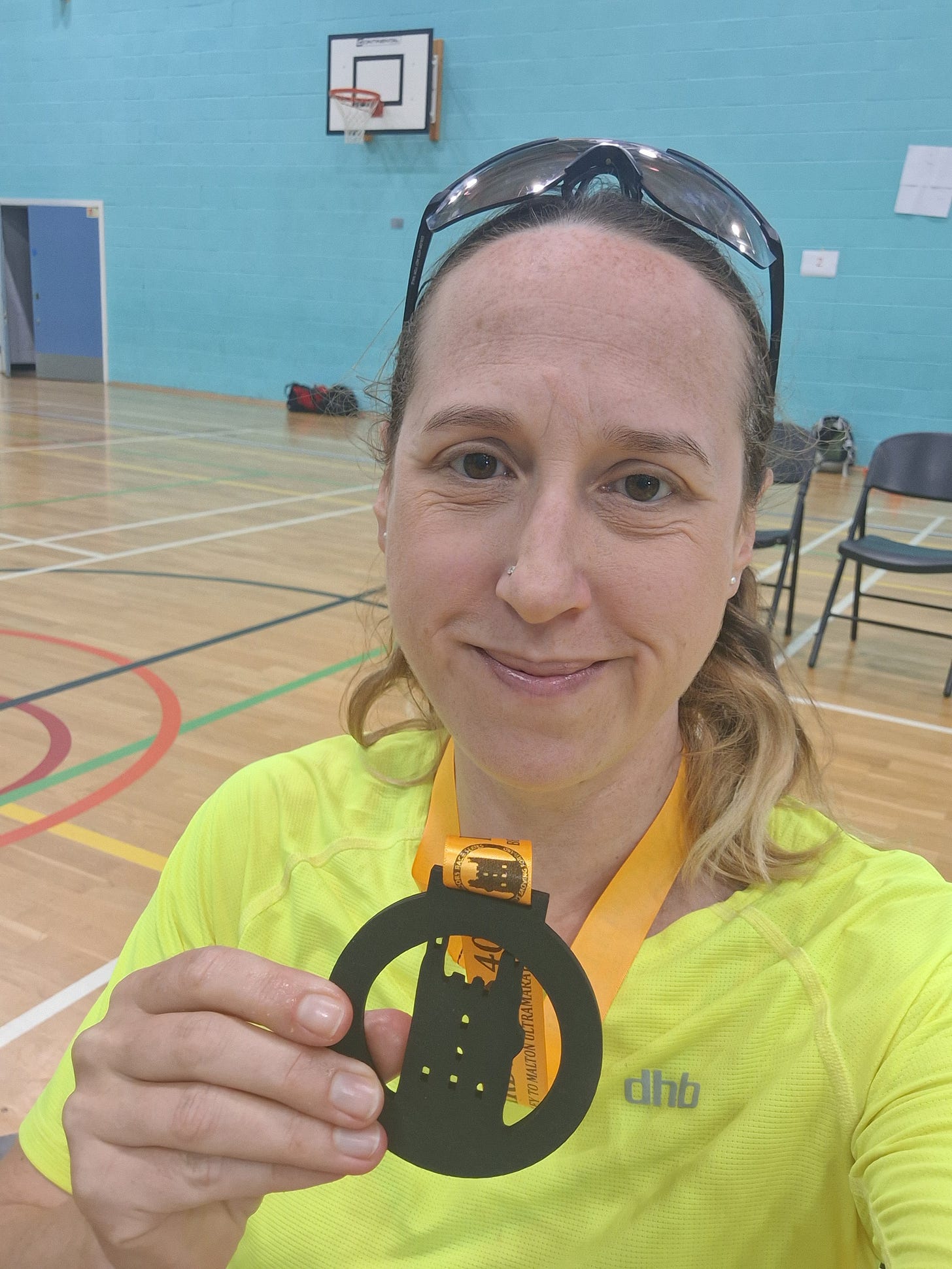I came second in the mum’s race at sports day this week. Yep second. Every year I feel this invisible pressure to win it, and I usually come second. But this year I had my excuse ready. Three days earlier I had run a 48-mile race through the rolling hills of North Yorkshire (with my running buddy Emma Wilkinson).
Hardwolds 40 is an ultra marathon with no clear distance. It could be 45 miles, 46, 47 or as it turned out 48 miles (77.25km). This is fairly normal for a long distance trail race because it depends on the route you take across fields (particularly if there are cows to avoid) and the number of times you get lost / go off route and have to retrace your steps (twice on Saturday).
It was the second time I had run this kind of distance in one go, but this time the weather was hotter which meant I had different things to manage. Key concerns were chafing and hydration.
After these kind of events I always get lots of questions like “what did you have to do in training?”, “how do you keep going for so long?” and “do you eat whilst running?”
In all honesty I’m a bit blasé these days because I have run lots of ultra marathons of various distances. Once I know I can run a certain distance doing it a second time never seems so daunting. But the key to running ultra distances (anything longer than a marathon) is preparation rather than being a “good” runner or running 100+ miles a week in training. It’s also important to learn from every single race.
What I’ve learnt about training
My training has changed a bit in the past year, since getting my own running coach. I now actually do less mileage overall but more speed and hill work, and I’ve doubled my gym sessions (from one a week, to two).
My highest mileage week going into this race was coincidentally 48 miles, spread across five runs plus two 40-minute gym sessions.
The biggest difference I noticed during the race was the gym sessions. I was definitely stronger on the uphill walks and for the first time in my life overtook a few people. This has never happened. The less is more approach to the mileage also seemed to pay off. When we reached the final six miles I had energy to spare and ditched my running partner (who had been joined by her daughter so I let them have some family time) and took full advantage of a long downhill stretch and let rip. It meant that in the final few miles I was jogging along at a gentle pace overtaking people who were walking.
In my training I had often used my Hoka Skyward X for the harder sessions. Doing hill reps or tempo pace in these beauties is such as dream. The energy return is the best I’ve experienced from a Hoka super shoe probably owing to the fact they have a 48mm stack. Whilst this is great for giving you a speedy boost or making hills feel easier in training, they are banned from races because they are higher than the 40mm allowed by World Athletics. And I did find that after an hour of moderate to hard running in them my Achilles started to ache which never happens in other shoes. Injury risk and carbon super shoes is something I have written about before. But for shorter tempo/hill sessions they are now my go to shoe and they are also great for slower recovery runs when my legs are feeling tired.
I did check with my coach that training in them was not “cheating” as they definitely make me run faster with less effort but he reassured me that they were allowed.
What I’ve learnt about kit
Running an ultra marathon is not just about doing lots of long runs in training. It’s also about knowing what kit works for you and how you can prevent pain and discomfort when running for 12 + hours up to several days with very few stops.
Preventing chaffing and blisters is key. Once your skin is damaged it can be very difficult to alleviate the pain. Getting to know your pain points only comes with experience but the mantra “treat a small problem before it becomes a big problem” is vital.
For me chafing under my bra band is always an issue even in my amazing Booby Doo bra. To prevent this from happening I now put a line of waterproof KT Tape under the bra band at the front and back and then put lubricating jelly on top.
At the Hardwolds 40 I sweated a lot particularly on my chest but the tape kept the chafing under control. Had I been running for longer than 11 hours I would have needed to dry my chest and reapply the tape. Although this tape is usually used for strapping injuries or weak spots its great adhesive means it is ideal for chafing hotspots too and more effective than zinc tape which I was previously using,
What zinc tape is great for is taping toes where you are likely to get blisters. Before Saturday’s race I applied tape to the side of both of my big toes and on the tops of my two middle toes. This along with my new INOV8 Trailfly shoes with their wider toe box (even in the standard size) meant I didn’t get a single blister. And neither did Emma who was wearing the same shoes.
Getting the right shoes is vital but you need to consider how much your feet will swell as the hours go by and therefore how much extra space you require (more on choosing shoes here).
I’ve also recently had to switch to cycling shorts rather than looser shorts for running ultras. Turns out all that gym work was making my thighs bigger and they started chafing. I tried tape and lube but neither worked. Thanks to advice from other ultra runners I switched to longer, fitted cycling shorts and the problem instantly abated.
Another thing I have learnt is not to wear a vest even when it is super hot or humid. I ran 250km in Tanzania in a running tee and it was ideal. So for any long races I always dust down my dhb t-shirt with its aerated mesh back. It is fluorescent yellow which helps to reflect the sun’s heat and I avoid burning my shoulders. It also means I don’t get any chafing from my running vest because the sleeves are just long enough to create a barrier between by inner arm and the vest strap.
Again all of this has come from trial and error in training and it’s really important to test your kit over long distance and try new things to eliminate any future problems.
What I’ve learnt about fueling
When I first started ultra running I really struggled with fueling and it wasn’t unusual for me to have a big energy bonk around the 26 mile mark. I would feel nauseous and although my legs felt fine I felt like the energy had been drained from my upper body. I soon realised this was down to what I was eating and drinking. I had seen what other runners were doing and tried the same thing. Sweets, gels, electrolyte drinks, cake and any free samples I’d nabbed at the National Running Show. But these things didn’t work for me.
Sweet sugary things made me feel awful including overly sweet electrolyte drinks. I needed savoury energy with the odd sweet treat as a reward boost. I’ve since switched to more slow releasing carbs like boiled salted potatoes (which are as satisfying as chips when you are mid ultra) together with peanut butter wraps, avocado and hummus sandwiches, salted peanuts and Veloforte nut bars which are not too sweet and are made from natural ingredient. I also use the most neutral tasting electrolyte tabs I can find and always have one water and one electrolyte bottle.
If I ever feel on the edge of an energy dip I will have a gel but I prefer Mountain Fuel’s neutral flavour. For an occasional sweet pick me up I love the orange Luchos but I can’t eat too many of these in one race. I am also partial to donuts as although sweet they give a good immediate carb hit.
Variety is key for me and I will pick up stuff at aid stations such as bananas, a packet of crisps or the odd biscuit but I avoid all sweets. At Hardwolds 40 a little girl handed me a piece of mango out of her car window just at the right moment, 44 miles in when the sun was blazing and I needed a refreshing pick me up.
Over the 48 miles I ate:
200g of salted peanuts
3 x peanut butter wraps
1 x Luchos square
450g of new potatoes (which I had boiled, salted and oiled before hand)
2 x plain donuts
1 x Mountain Fuel gel
4 x Veloforte bars
1 x packet of Veloforte chews
1 x biscuit
1 x prawn cocktail crisps
What I’ve learnt for the next race
No matter how much you plan you can always learn for the next race. In August I am attempting 100k continuously, a distance I have only ever run over two days with a night’s sleep in between. Those extra 14 miles are going to be tough especially since I am doing all of this race on my own.
I know that at around 45 miles I will need a proper meal to keep me energised to the end. I just don’t think potatoes and bars will cut it. So I am planning to have my family meet me with a pizza.
I’m also going to recce the route, something I have never done before. The main reason is to see the ground conditions so I can decide which shoes to wear. Although the INOV8 Trailflys were fab for blister avoidance my feet were sore much of the time because the ground was so hard. I may consider a shoe change to more padded shoes or even road shoes at some point on the 100k if the ground hasn’t softened.
I will also be running at night so I need to invest in a good head torch as running at 4am in Tanzania taught me that my £10 Amazon head torch is useless. I will probably need to practice running at night too particularly when I am tired so some midnight runs might be on the cards.
I know that with the right preparation and good choices that running 100k is possible. So I’m looking forward to putting my racing lessons to the test!








